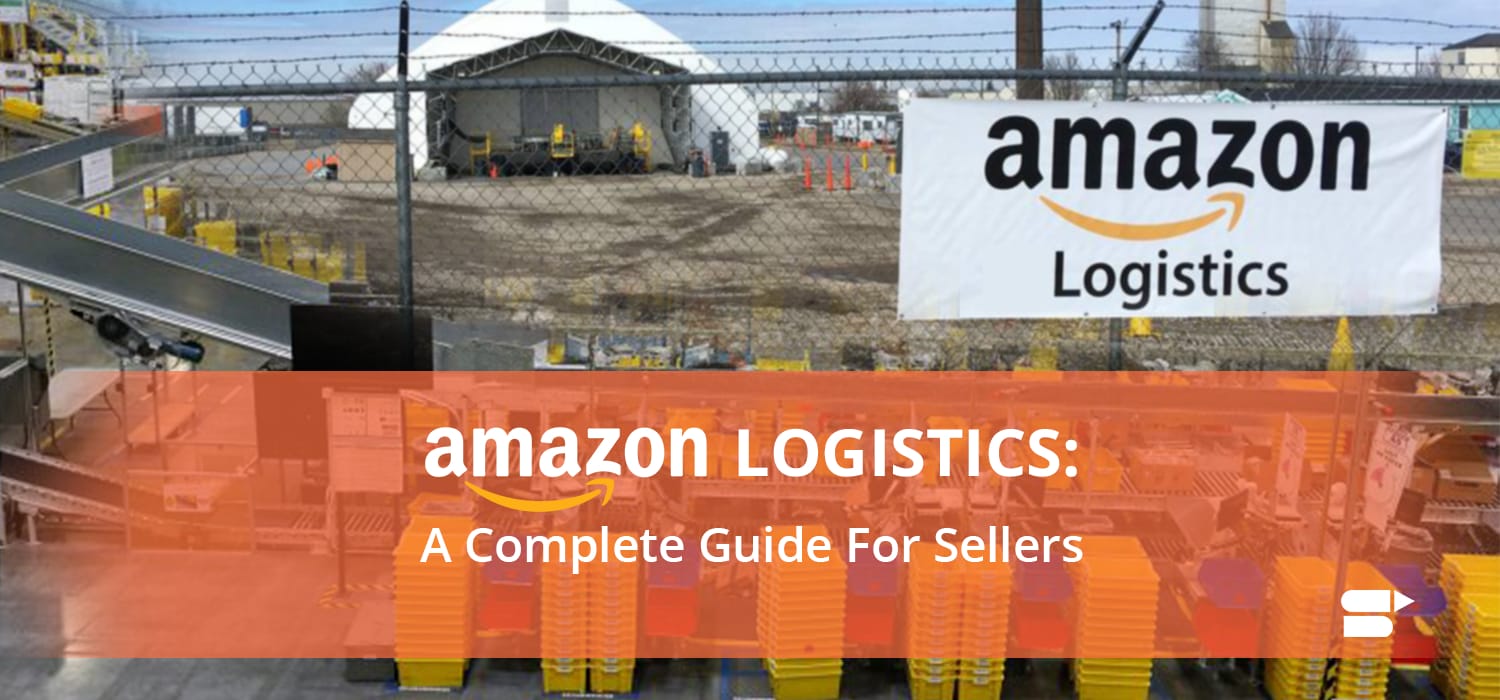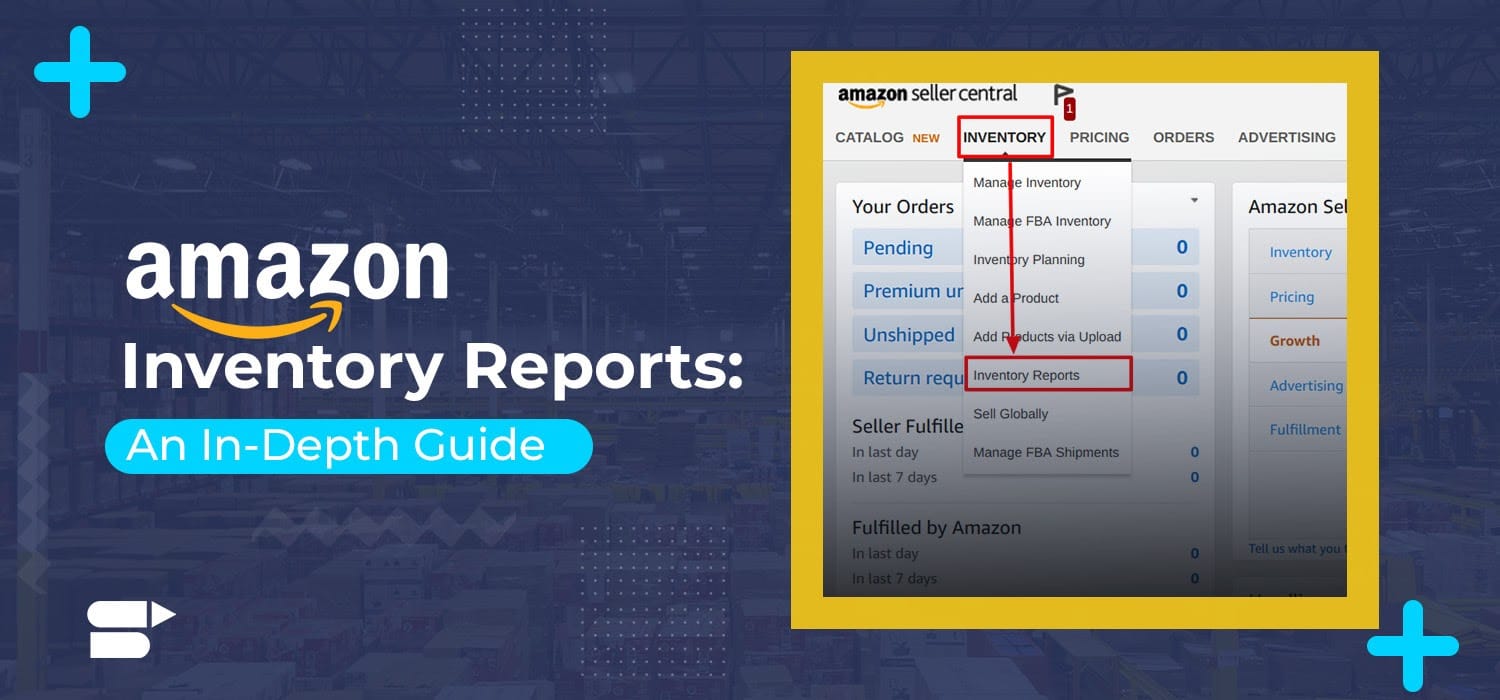Walmart Inventory Management: Everything You Need to Know

If you’re an e-commerce business owner, you are likely familiar with Walmart, the world’s largest retailer. With its massive reach and influence in the market, chances are that your business may have had some dealings with this retail giant.
However, you might not be aware that Walmart operates on a distinctive inventory system, setting it apart from the practices commonly employed by most marketplace giants.
In this blog post, we aim to offer a comprehensive overview of Walmart’s distinctive inventory system, providing you with valuable insights.
Here’s a sneak peek into the article
- What is inventory management in e-commerce?
- Importance of Walmart inventory management
- How does Walmart’s inventory system work?
- Walmart’s vendor-managed inventory model
- Different types of inventory at Walmart and their functions
- How Walmart measures inventory performance
- Walmart inventory management strategies for an effective supply chain
- Benefits of Walmart’s inventory management system
- Conclusion
Understanding Walmart inventory Management
Inventory management is the biggest asset of any retail business, and you should treat it like one.
encompassing storage,sourcing, and selling of products. It serves as the backbone of efficient operations and plays a crucial role in preventing wastage and saving both time and money.
Whether your business is small or large, understanding how to effectively manage your inventory is essential. Implementing a robust inventory management system can significantly increase efficiency and reduce operational costs, providing your business with a valuable source of leverage.
Inventory management is a crucial aspect of any business, yet many companies, even major ones, still face challenges in this area. These struggles can sometimes lead to disastrous consequences and even the collapse of a firm. To avoid such pitfalls, you should invest in a proper inventory management system to ensure your products consistently remain at the forefront of the supply chain.
There’s no one size fits all approach in inventory management. Depending on your business model and requirements, you can use ABC analysis, JIT (Just-in-time) inventory, Dropshipping, or First in First out (FIFO) approaches to manage your inventory. Strategies such help you avoid overstocking and understocking issues, plan for unexpected demand surges, and effectively manage the supply chain.
Importance of Walmart inventory management
Walmart’s inventory management holds immense significance in the retail giant’s operations and overall success. As one of the world’s largest retailers, Walmart deals with a vast array of products and serves a massive customer base. Efficient inventory management is the backbone of its supply chain, enabling the company to oversee and control various aspects, including raw materials, finished goods, warehousing, and storage.
One of the primary goals of Walmart’s inventory management is to ensure that products reach distributors and stores promptly and efficiently.
By carefully tracking inventory levels and demand patterns, the company can minimize the risk of stockouts, where products are unavailable when customers want to purchase them. This proactive approach to inventory management ensures that customers find the products they need when they walk into a Walmart store or shop online, enhancing customer satisfaction and loyalty.
Moreover, Walmart’s inventory management is geared towards striking a delicate balance in stock levels. Excessive stock ties up valuable capital and storage space, while insufficient stock can lead to lost sales opportunities and dissatisfied customers. By avoiding both overstocking and understocking, Walmart can optimize costs, improve profitability, and maintain a healthy inventory turnover ratio. This careful balance allows the company to stay agile and responsive to changing market demands.
Accurate inventory records are essential for any retailer, and Walmart is no exception. By maintaining precise inventory data, Walmart can optimize its operational efficiency. This includes planning staffing levels to meet customer demand, managing storage space effectively, and ensuring that the supply chain runs smoothly.
Real-time visibility into inventory levels across Walmart’s vast network of stores and distribution centers empowers the company to make data-driven decisions, optimizing product offerings, pricing strategies, and stock allocations.
Recommended read:
What is the registration process for Walmart plus
How to Sell Refurbished Products on Walmart’s Restored Program
How does Walmart’s inventory system work?
Walmart’s inventory system is a sophisticated and highly efficient platform that plays a crucial role in the company’s supply chain management. The system is designed to facilitate seamless coordination between Walmart and its suppliers, ensuring a constant flow of products to meet customer demands.
Here’s how Walmart’s inventory system works:
Real-Time Updates:
The system constantly updates information about how much of each product is available. So, when you buy something from Walmart, the system immediately knows and adjusts the inventory accordingly.
Supplier Collaboration:
Walmart works closely with the companies that supply them with products. These suppliers use the system to know when their products are running low in Walmart’s stores. They then send more of those products to Walmart to keep the shelves stocked.
Avoiding Stockouts:
The system helps Walmart avoid running out of popular products. When the inventory of a product gets low, the system alerts the supplier, who quickly sends more to Walmart. This way, you’re more likely to find what you need when you go shopping.
Cost Savings:
By using this smart system, Walmart can reduce unnecessary costs. Suppliers take care of managing their products’ inventory levels, which means Walmart doesn’t have to keep too much stock on hand.
Happy Customers:
Because the system keeps products available and reduces stockouts, customers have a better shopping experience. You can find the things you want, and Walmart can offer competitive prices.
Thus, Walmart’s inventory system helps them and their suppliers work together smoothly, making sure products are available when you need them, keeping costs down, and ensuring happy customers.
Walmart’s vendor-managed inventory model
One of the key factors behind Walmart’s successful inventory management is its vendor-managed inventory model. In this system, suppliers play a proactive role in managing their products’ stock levels at Walmart stores. They use Walmart’s information systems to access real-time data on inventory levels and decide when to send more goods to the company.
With this approach, some of the inventory control responsibilities are transferred to the suppliers. They have direct access to Walmart’s inventory data, allowing them to better monitor and manage their products’ availability in stores. This collaboration between Walmart and its suppliers helps minimize delays in the supply chain, ensuring products reach the stores efficiently.
The vendor-managed inventory model benefits both Walmart and its suppliers. For Walmart, it leads to reduced inventory management costs as suppliers take on the responsibility of managing their goods. This means Walmart doesn’t need to hire additional staff to handle each supplier’s inventory. Instead, the costs are directly borne by the suppliers.
Recommended read: Amazon Review Software Tools to Increase Sales.
Different types of inventory at Walmart and their functions
Walmart employs a diverse range of inventory types to efficiently manage its vast retail operations. Among the most important inventory categories are:
Finished Good Inventory
This is the backbone of Walmart’s business. It comprises the finished products that arrive at Walmart’s retail locations, where they are stored and regularly replenished. The main purpose of this inventory is to support the smooth operation of Walmart’s stores, ensuring that products are readily available for customers. These finished goods are moved from Walmart’s merchandise distribution centers to the store shelves for sale to retail buyers.
Transit Inventory
As Walmart’s supply chain spans globally, transit inventory plays a significant role in supporting its retail operations. This inventory category refers to goods that are in transit, often for days or weeks, as they move through the supply chain. The purpose of transit inventory is to aid in replenishing finished goods inventory at merchandise distribution centers and Walmart stores, ensuring a steady flow of products to meet customer demand.
Buffer Inventory
Walmart utilizes buffer inventory at its stores, maintaining a small surplus of goods on hand. This extra stock serves as a safeguard against unexpected fluctuations in demand. The purpose of buffer inventory is to ensure business continuity and accommodate sudden increases in customer demand, as retail market prediction models may not always perfectly anticipate such fluctuations.
Anticipation Inventory
Based on seasonal changes and market data, anticipation inventory is employed by Walmart to meet specific periods of heightened demand. For instance, Walmart significantly increases its inventory size before and during events like Black Friday, Christmas, and long holiday weekends. This inventory type allows the company to proactively address expected seasonal spikes in customer demand and ensure sufficient stock availability during these special shopping periods.
Through strategic management of these various inventory types, Walmart maintains a responsive and efficient supply chain. That also guarantees well-stocked stores to meet customer demands consistently.
How does Walmart measure inventory performance?
Given the vast scale and diverse product range of Walmart’s business, the company employs several key variables to gauge inventory performance.
Some of the most important measures used by Walmart are:
Inventory Turnover
The turnover of inventories, also known as inventory turnover rate, is a crucial metric used by Walmart to assess how quickly its product inventory is sold out and replenished. It measures the frequency with which items are sold and replaced within a specific period, typically a year. A higher turnover rate indicates that products are moving off the shelves swiftly, reducing the time items spend in inventory.
Walmart aims for a high inventory turnover rate as it signifies efficient sales and restocking processes. This approach aligns with the company’s cost leadership strategy, which emphasizes cost minimization and operational efficiency. By turning over inventory rapidly, Walmart reduces holding costs, such as storage and carrying expenses and can pass on cost savings to customers through competitive pricing.
Stock-out Rate
The rate of stock-outs is another vital variable Walmart closely monitors. A stock-out occurs when the available inventory is insufficient to meet customer demand for a particular product. For a retailer like Walmart, avoiding stock-outs is essential to provide a positive customer experience and maintain customer loyalty.
Walmart strives to minimize stock-outs to ensure that customers can find the products they need when visiting their stores. Through effective inventory management and close collaboration with suppliers, Walmart endeavors to maintain optimal inventory levels and respond promptly to changes in demand. By minimizing stock-outs, Walmart can enhance customer satisfaction and retention.
Inventory Size
The size of the inventory refers to the total quantity of products held by Walmart at any given time. Walmart carefully manages the size of its inventory to strike a balance between meeting customer demand and minimizing holding costs. A larger inventory may provide a wider selection for customers, but it can lead to higher storage and handling expenses.
With the help of inventory size, Walmart can maintain a responsive supply chain, ensure product availability, and uphold its commitment to offering customers a broad range of products at competitive prices.
Walmart inventory management strategies for an effective supply chain
Walmart employs effective strategies to manage its inventory across its extensive supply chain.
Here are the key approaches they use:
ABC Analysis
Walmart categorizes its inventory into three groups based on its significance. Category A items include finished goods and operational equipment, which are closely monitored and recorded. Category B items consist of supplies and materials used for operations, receiving moderate monitoring and recording. On the other hand, Category C involves the least monitored and recorded inventory items, like janitorial and office supplies, with minimal impact on daily retail operations. This categorization helps Walmart prioritize and efficiently manage its inventory based on its importance.
Integrated Information Systems
Walmart’s integrated information systems support its global retail operations and e-commerce. These systems are utilized throughout the organization and play a vital role in inventory management. Walmart provides its suppliers with access to their product inventory data through these systems, supporting its vendor-managed inventory model. This enables a collaborative approach where suppliers actively manage their products’ stock levels in Walmart’s stores and distribution centers.
Bullwhip Effect Management
The bullwhip effect, where errors amplify throughout the supply chain, can harm Walmart’s operations and increase costs. To minimize this effect, Walmart employs a vendor-managed inventory model. By allowing suppliers direct access to their data, Walmart reduces the involvement of company personnel in errors associated with moving goods from suppliers to stores. This fosters a more efficient and error-resistant supply chain.
Recommended Guide: Why should you advertise on Walmart?
Benefits of Walmart Inventory Management System – Benefits
In addition to providing excellent services for eCommerce businesses, Walmart and other 3PLs primarily focus on their interests.
As a business owner, the return on investment (ROI) of your business investments is crucial, and tracking inventory costs and supply chain requirements are a must.
To efficiently manage inventory and streamline operations, businesses often need an external system that complements the Walmart ecosystem. The Walmart inventory management software is designed to track all aspects of a business’s inventory, from supplier management to product shipping.
This system offers several tangible features and benefits:
Utilizing Multiple Data Aggregation Channels
A successful business strategy involves selling products through various channels, not limited to just Walmart. Retailers can leverage physical locations, customizable storefronts like Shopify, and reputable marketplaces like Etsy and eBay. Relying solely on Walmart may not be ideal due to higher fees for slow-moving items and seasonal storage. An efficient inventory management system can consolidate all inventory data into a single dashboard, simplifying operations and eliminating the need for multiple logins.
Recommended read: 13 Best SEO Tips for Etsy Sellers
Implementing a Robust SKU System
Maintaining an organized product tracking system is crucial for a multichannel strategy. With a Walmart inventory management app, businesses can easily create unique SKUs for each product, incorporating essential details like attributes, manufacturing dates, locations, and lot numbers. The ability to generate and print barcodes further streamlines replenishing Walmart’s inventory.
Generating Comprehensive Reports
As businesses diversify their sales channels, reconciling reports from various storefronts becomes essential but time-consuming. To ensure a positive return on investment (ROI), having access to comprehensive reports is crucial. Walmart’s fulfillment services (WFS) offer helpful reports, such as the Replenishment Report, aiding in effective inventory management. These reports facilitate sales forecasting, reorder point establishment, and determining optimal order quantities.
By embracing these strategies, businesses can efficiently manage inventory across multiple channels, optimize their operations, and make informed decisions to enhance overall performance and customer satisfaction.
Conclusion
Walmart’s inventory management practices play a pivotal role in the success of the retail giant. Through a combination of strategic approaches, advanced information systems, and efficient supply chain management, Walmart has set a high standard for inventory control and optimization.
As a beacon of effective inventory management, Walmart’s practices serve as a valuable example for businesses aspiring to optimize their inventory control and achieve long-term success in the dynamic world of retail.
Ultimately, to take advantage
Additional read:
How does AmazonAI review summaries work?
What are the criteria to get the Pro Seller badge?
11 actionable Walmart advertising strategies.
Eligibility Criteria for Walmart Restored Program
Surprising Walmart Facts and Statistics That Will Blow Your Mind











Kelsey
September 13, 2023Thank you, SellerApp, for being a valuable resource in my journey as an Amazon seller!
Clare Thomas
March 13, 2024Glad to hear that SellerApp has been instrumental in your Amazon seller journey.
Jake
October 31, 2023Kudos to the team at SellerApp for consistently delivering top-notch content!
Clare Thomas
March 13, 2024Glad you’re enjoying the content, appreciate the recognition!